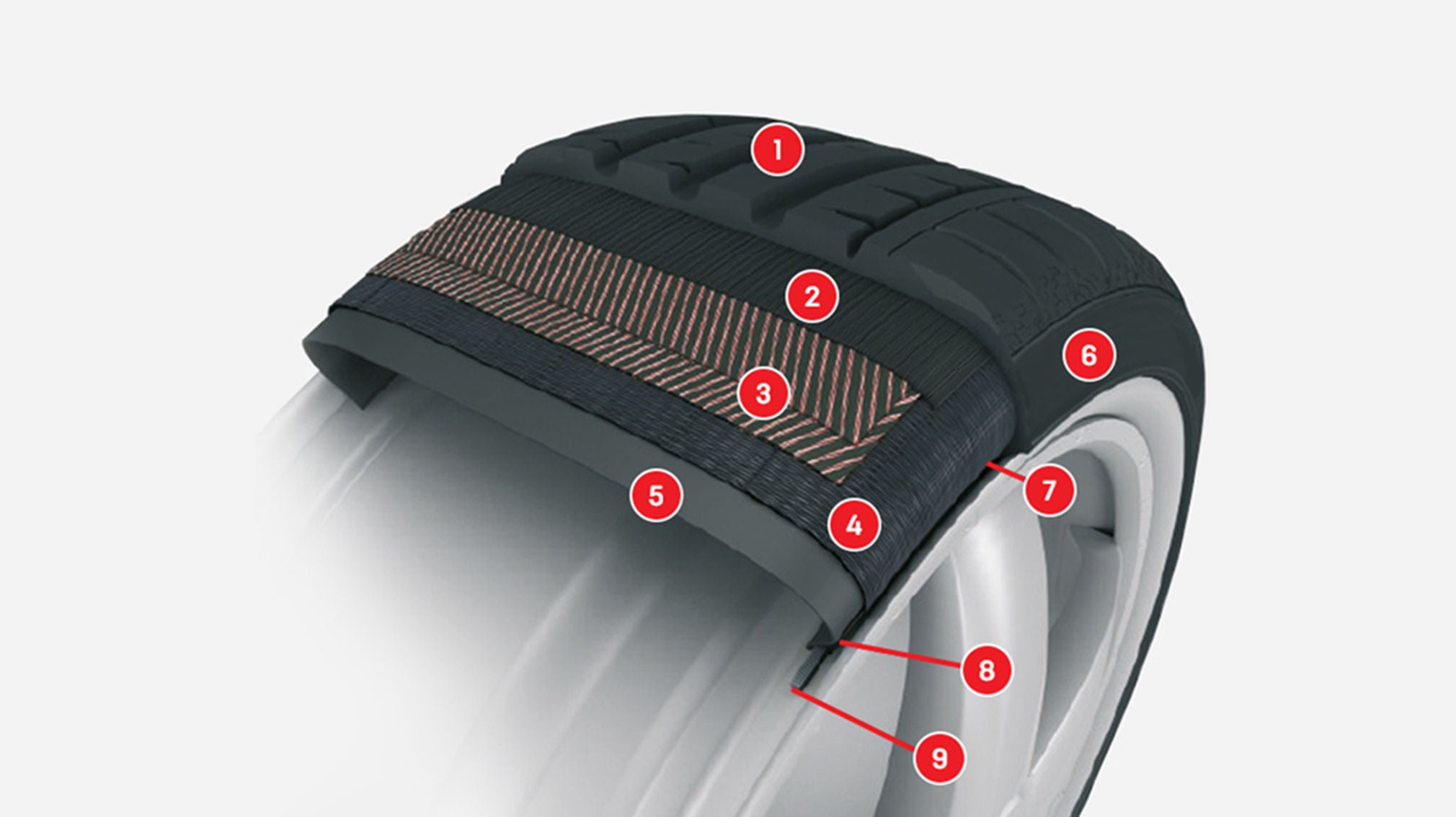
Passenger car tyres are products of complex engineering. They consist of numerous rubber compounds, many types of carbon black, fillers like silica, and chemicals or minerals. Find out here how tyres are put together.

A tyre’s components
1. Tread. Made from synthetic and natural rubber, it’s comprised of three sections: the “cap”, which is responsible for gripping the road and providing directional stability and wear-and-tear resistance, the “base” which reduces rolling resistance and damage to the casing and the “shoulder” which forms an optimal transition from the tread to the sidewall.
2. Jointless cap plies. Found just underneath the outer layer of the tyre, this nylon cord, embedded in rubber, enhances high-speed suitability.
3. Steel-cord for belt plies. High-strength steel cords that enhance shape retention and directional stability. As well as reducing the rolling resistance they help to increase the tyre’s mileage performance.
4. Textile cord ply. Rayon or rubberized polyester controls the internal pressure and maintain’s the tyre’s shape.
5. The inner liner, made from butyl rubber, seals the air-filled inner chamber and acts as a tube in tubeless tyres.
6. The side wall protects the casing from external damage and atmospheric conditions. Information about the tyre can also be found on the side wall.
7. Bead reinforcement, made from nylon and aramid fibres, enhance directional stability and ensure steering precision.
8. Bead apex. This synthetic, rubber material also enhances directional stability and steering precision while improving comfort.
9. Bead core. This steel wire, embedded in rubber, ensures that the tyre sits firmly on its rim.
Related Topics
-
 2023/03/31Tyre materialNot all rubber is alike. With Uniroyal, you learn about and gain an understanding of the composition of car tyres and the material used. Find out more here!Read more
2023/03/31Tyre materialNot all rubber is alike. With Uniroyal, you learn about and gain an understanding of the composition of car tyres and the material used. Find out more here!Read more -
 2023/03/31Tyre careTyre care: We explain what to look out for and the best way to clean your tyres before storage. Find out more here now!Read more
2023/03/31Tyre careTyre care: We explain what to look out for and the best way to clean your tyres before storage. Find out more here now!Read more -
 2023/03/31Tyre repairWe always recommend that tyres are repaired by professionals. They know whether it is safe or legal to repair a tyre, rather than replace it.Read more
2023/03/31Tyre repairWe always recommend that tyres are repaired by professionals. They know whether it is safe or legal to repair a tyre, rather than replace it.Read more